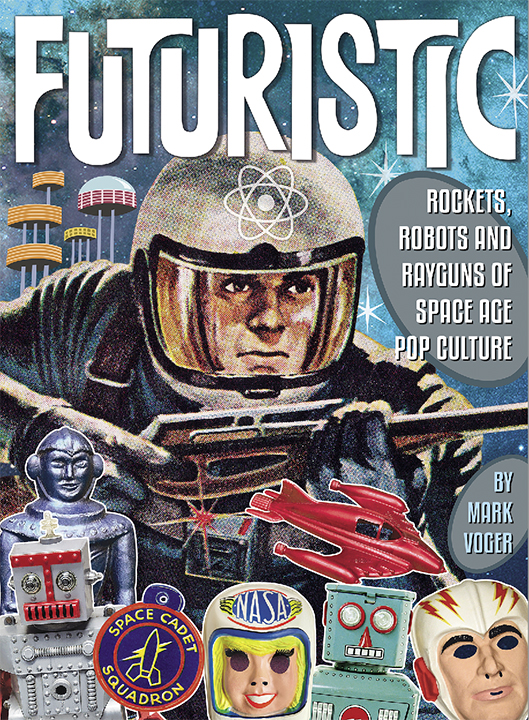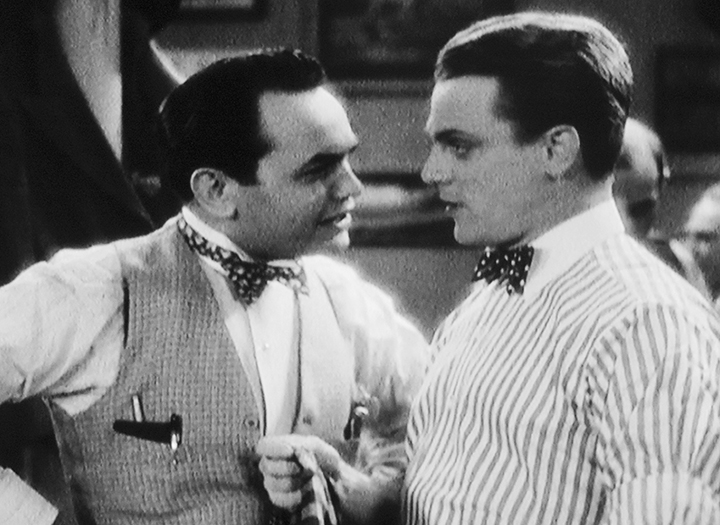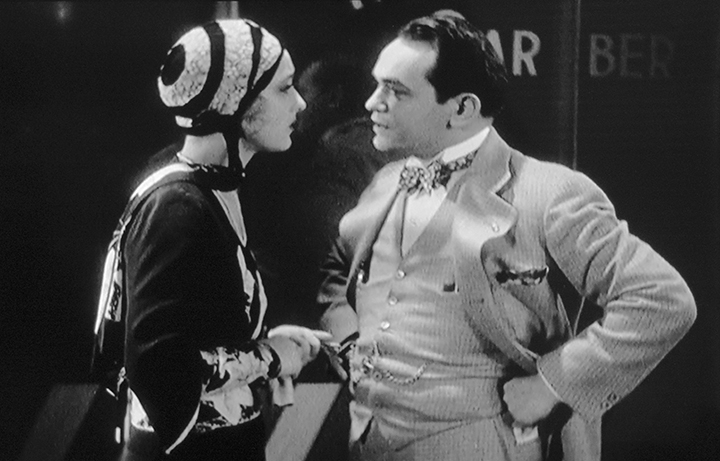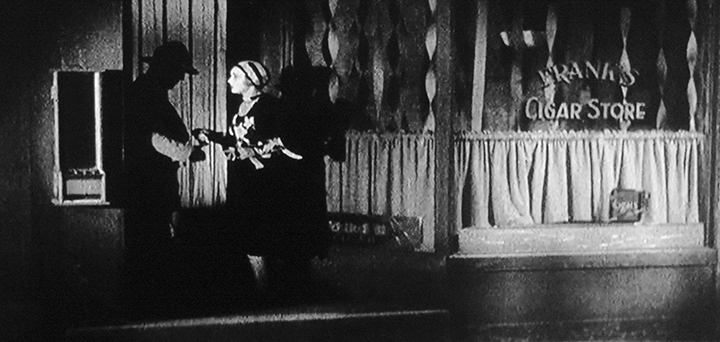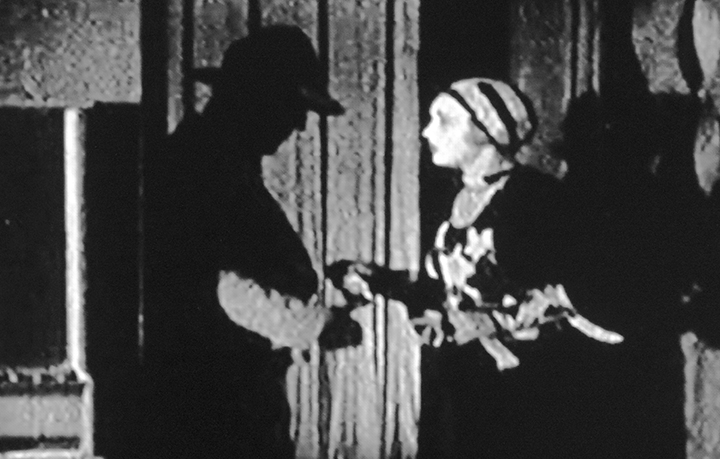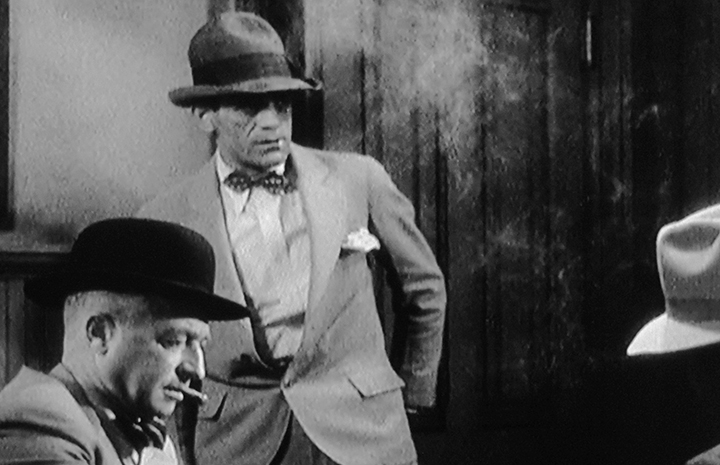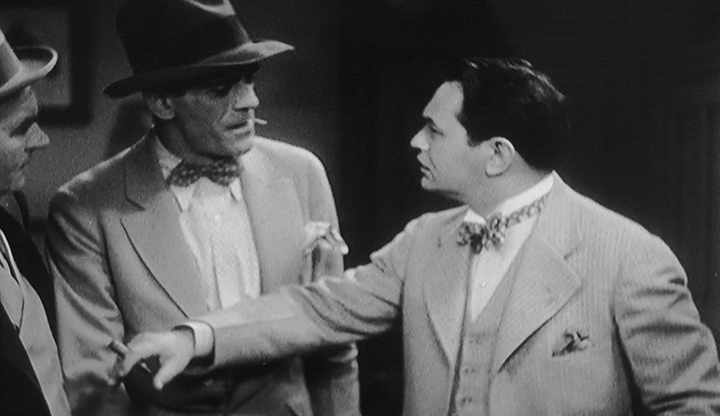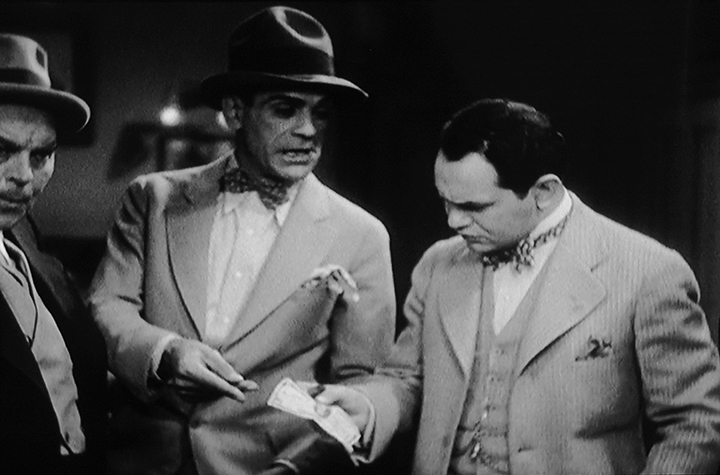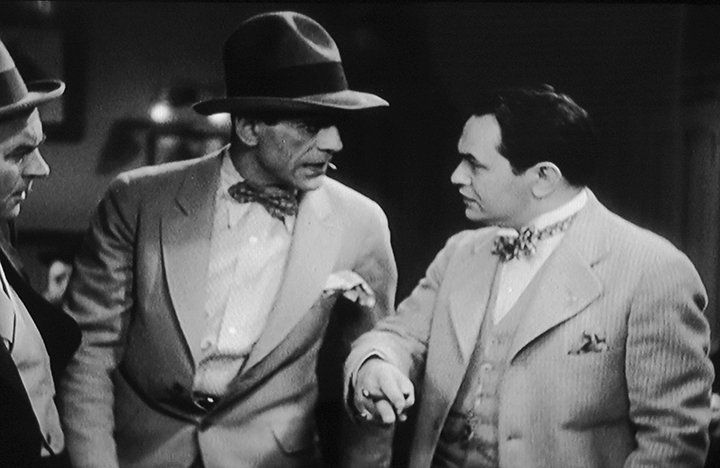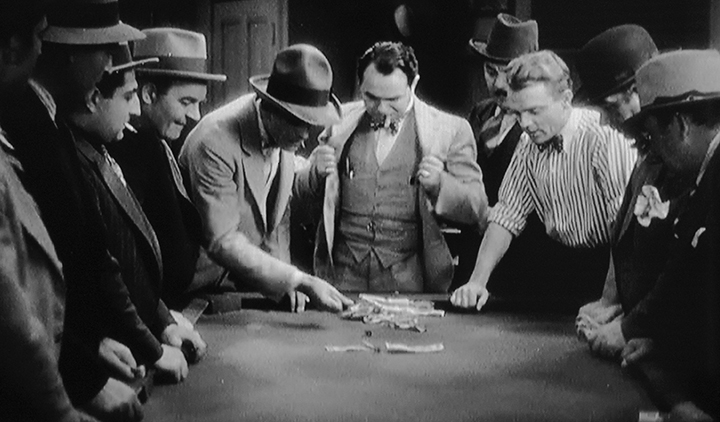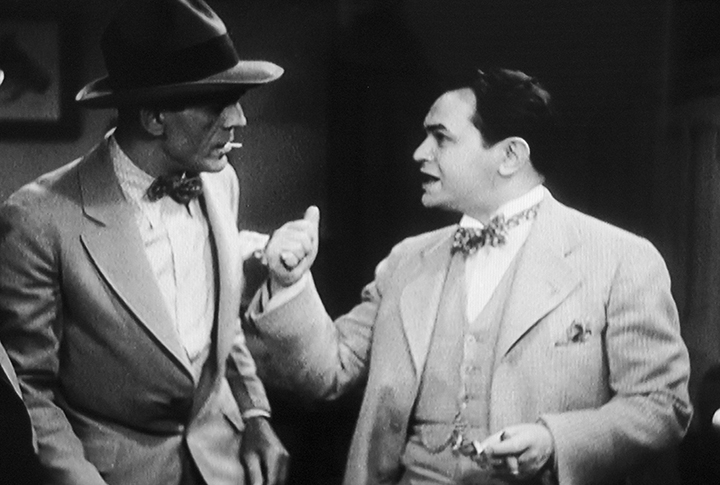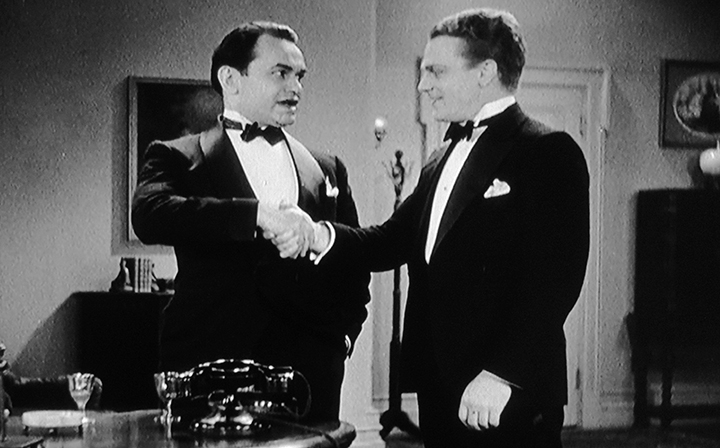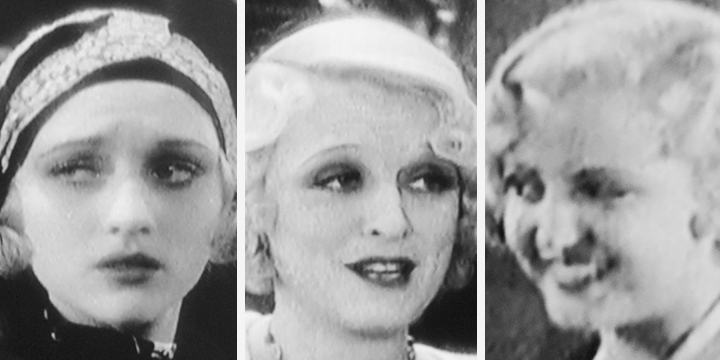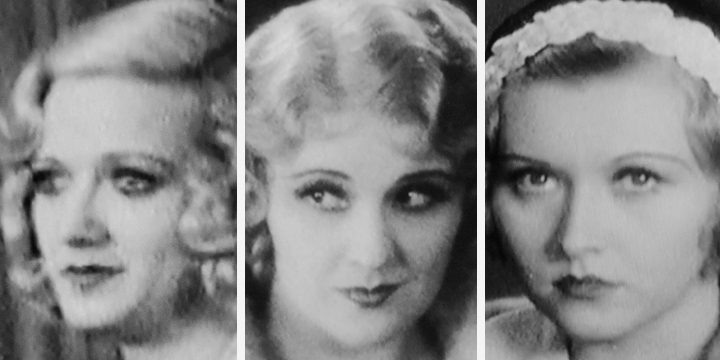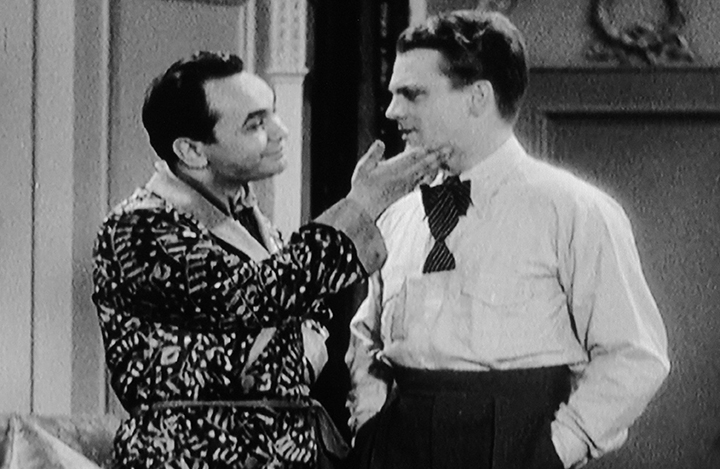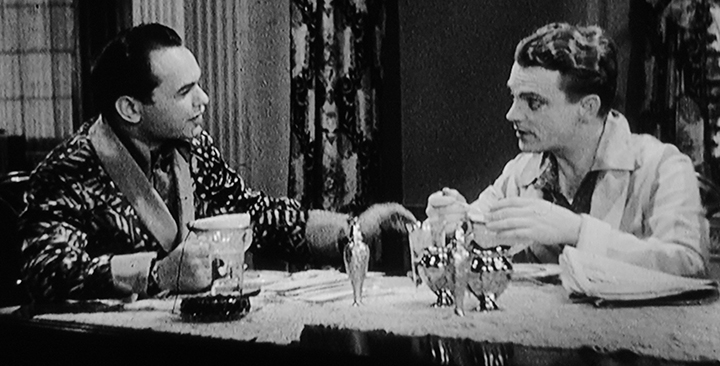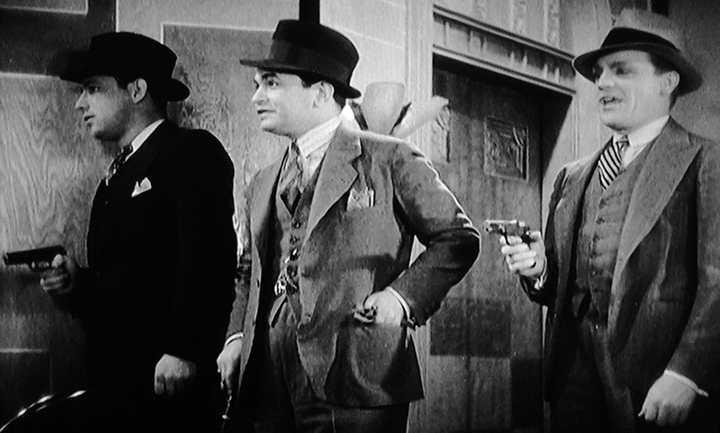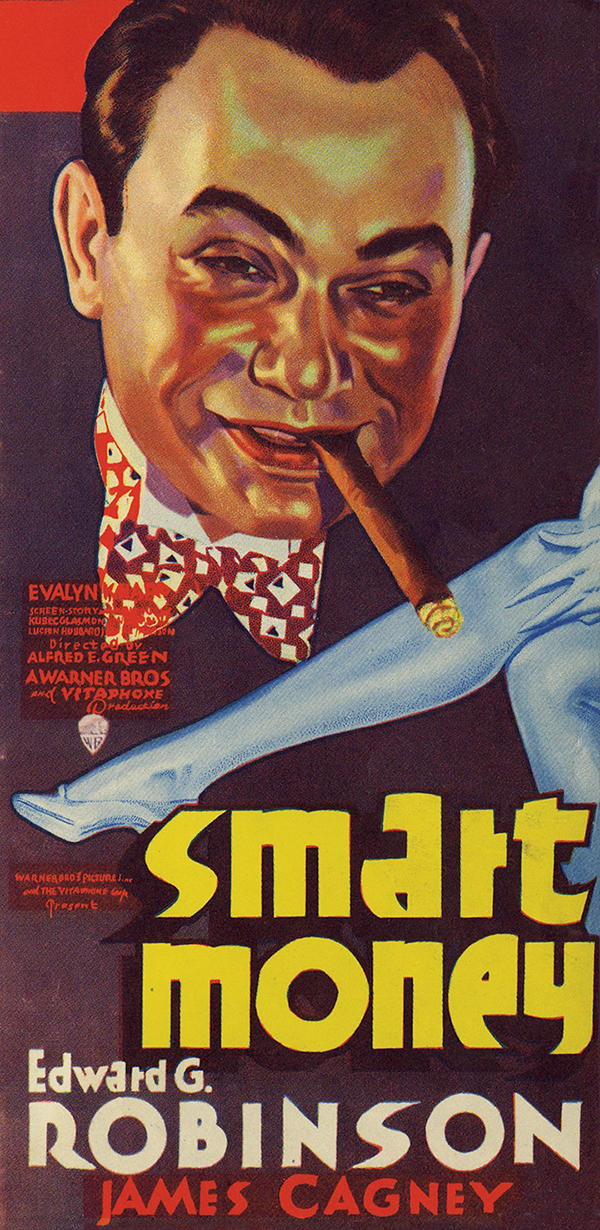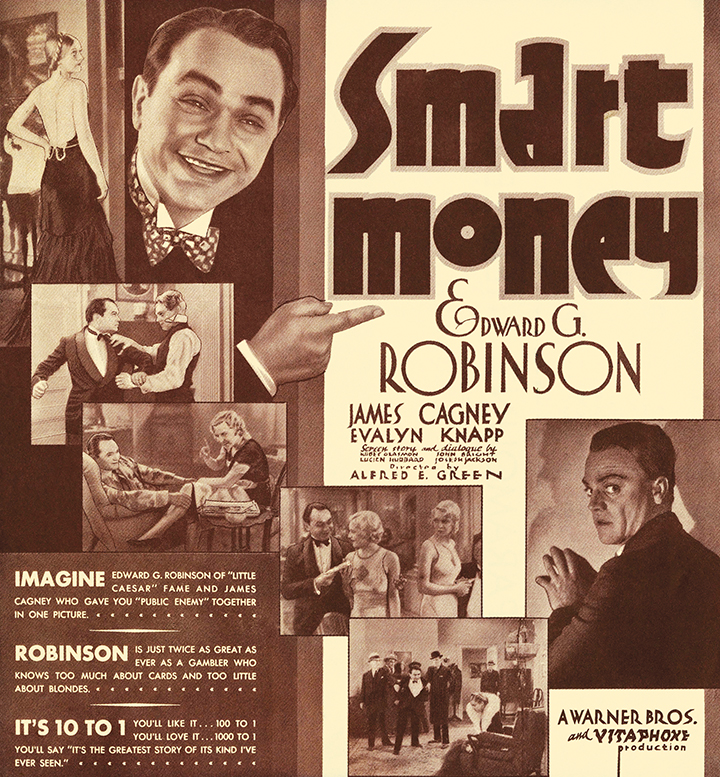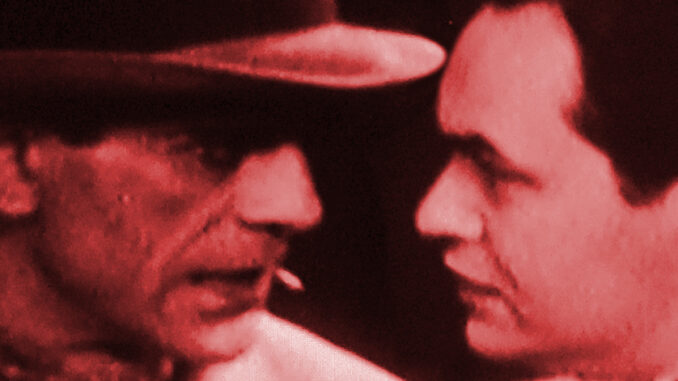
Triumvirate of rising stars
By Mark Voger, author
‘Futuristic: Rockets, Robots and Rayguns of Space Age Pop Culture’
It continues to amaze, the sheer eclecticism of Boris Karloff‘s career. “He never said no” is how one agent described the actor. Karloff was directed by Golden Agers like Howard Hawks, John Ford, Michael Curtiz, Cecil B. DeMille, Robert Wise and Jacques Tourneur, and upstarts like Peter Bogdanovich, Mario Bava, Roger Corman and Michael Reeves. The guy was in the original “Scarface” (1932) as well as on TV’s “Shindig” (1965). He was like the Zelig of film.
Another case in point is Alfred E. Green‘s “Smart Money” (1931), significant as the only movie to team Edward G. Robinson and James Cagney, two great stars of gangster pictures. Karloff had a small but telling role in the film, and he appeared in a wide shot alongside Robinson and Cagney.
During this period, all three actors had breakthroughs that led to long careers — Robinson in “Little Caesar” (1930), Cagney in “The Public Enemy” (1931), and Karloff in “Frankenstein” (1931).
As a so-called “pre-code” film, “Smart Money” was able to present a shady protagonist and adult situations. Robinson plays Nick Venizelos, a barber shop proprietor in fictional Irontown who is shaving more than the faces of his customers. Nick has a dice setup by the cash register, and he coaxes customers into a double-or-nothing throw with the taunt: “Faint heart never won fair lady— or fat turkey.”
In the front room of the shop, where his partner-in-gambling Jack (Cagney) cuts hair, Nick also runs coin tosses and horse-betting. But the real action is in the back room, where bigger-stakes dice and card games happen.
Nick is summoned outside by a young woman (Mae Madison) who is clearly desperate. In what seems like a life-or-death request, she implores Nick to give her $100, big bucks in the days of the Great Depression. Nick complies with a $100 bill which, we see in closeup, has been torn and taped. (This somehow gives us the feeling we’ll be seeing that bill again.)
Soon, the woman meets a mysterious figure in the street, and wordlessly places the $100 bill in his waiting paw.
Here’s an enlargement from the shot, the better to study Karloff’s distinct profile in dark silhouette. We don’t know why she gives the money to this mystery man — loan sharking? Drugs? Prostitution? An abortion? In any case, the star of “Frankenstein” is playing a monster of another sort.
With a haggard face from which a tootpick droops, the underworld denizen known as Sport (Karloff) enters the crowded back room of Nick’s barber shop looking for a little action. Karloff, a Brit, does his best “tough guy” dialect. It isn’t terrible.
Nick knows this guy. Their conversation follows …
Sport: “Hey, let me in here!”
Nick: “Say, what are you doing around here, kibbitzing the game?”
Sport: “No. I got dough.”
Nick: “Well, we’re not taking on any two-bit bets tonight, Sport.”
Says Sport as he holds out the $100 bill: “Well, I’m not making any two-bit bets tonight. That look like two bits to ya?”
Nick recognizes the bill as the one he coughed up minutes ago. Sport wants to shoot $10 of it, but Nick stands firm: “The whole C-note or nothing!” Sport relents, saying resignedly: “Shoot the piece.” (Don’cha love 1930s gangster movie lingo?)
This leads to the remarkable shot showing three newly minted movie stars shoulder-to-shoulder: Karloff, Robinson and Cagney. Sport rolls the dice while Jack calls the action …
Roll #1: “Three and two. The point is five.”
Roll #2: “Six, and he wants five.”
Roll #3: “Seven. Makes him a loser.”
Crows Nick: “And the prisoner ate a hearty breakfast.” Laments Sport: “That cleans me.”
Sport still wants to hang out in the back room, but Nick insists he vacate the premises. “Go out that door; take that ‘welcome’ sign off it,” Nick says. With Sport’s departure, another barber (Maurice Black) asks Nick: “Boss. What-a you got against-a the Sport?” Replies Nick: “I don’t like the way he parts his hair.”
‘He’s nuts for blondes’
Karloff is never heard from again in “Smart Money,” nor does he need to be. This prelude achieves its goal to establish Nick as a confident, even boastful, gambler on a seemingly permanent winning streak who has a weakness for damsels in distress.
Staked by his back room buddies, Nick is soon off to “The City” (Manhattan, but not so named) to try his luck in the big leagues. He worms his way into a high-stakes game hosted by infamous gambler Hickory Short — or so he believes.
What follows is a tale of betrayal, violence and romantic vexation as Nick rises in the gambling world, keeping one step ahead of the law while he winkingly hints at his doings to an adoring press. In this way, Nick reminds you of Robinson’s Rico from “Little Ceasar,” though “Smart Money” has a generally lighter tone.
“He’s nuts for blondes,” con artist Sleepy Sam (Ralf Harolde) lets slip to the D.A. (Morgan Wallace), who means to nail Nick during this crucial election year. (Sleepy Sam, you see, has his own score to settle with Nick.)
It’s accurate information. Nick pursues, or at least flirts brazenly with, no less than six blondes during the course of “Smart Money.”
Above are the first three. From left: The desperate Irontown gal played by Madison; hotel shop cashier Marie (Noel Francis); and a manicurist (Polly Walters).
Then there’s, from left, a hat check girl (unidentified actress); a would-be mole (Margaret Livingston) enlisted by the D.A.; and a tragic casualty of life named Irene (Evalyn Knapp), who attempts suicide by jumping off a bridge into a river. Nick virtually adopts Irene, despite Jack’s warnings that she will be his undoing.
Most of the six actresses look familiar, even if the deepest-cut movie buff would be hard-pressed to name them. Madison appeared as chorus girls in “Golddiggers of 1933,” “Footlight Parade” and “Dames.” Francis and Walters worked with Cagney again in “Blonde Crazy” (also 1931). Livingston played the wicked city woman in F.W. Murnau‘s silent masterpiece of drama “Sunrise” (1927). Knapp was John Wayne‘s leading lady in the romantic comedy “His Private Secretary” (1933).
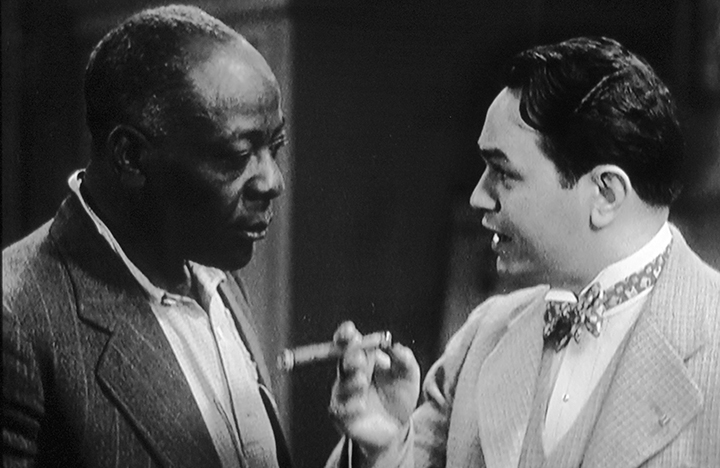
I’d be remiss not to mention an (unsurprising) inconvenient truth: There are instances of cringe-worthy racism in “Smart Money.” The character Snake Eyes, played by John Larkin, pushes the broom at Nick’s barber shop and speaks in stereotypical grammer and dialect. (In his day, Larkin was called “the Funniest Colored Comedian in the World.”) Black extras are seen as servers, doormen and a porter called “Suntan.” Twice, Robinson says “Gimme some luck” to Black characters (one of whom is Snake Eyes), and then musses their hair. Alas, this was de rigueur in old Hollywood movies.
A mitigating factor: You can tell that Nick and Snake Eyes love each other. And off screen, Robinson was a dyed-in-the-wool progressive — so much so that he was “grey-listed” during the Red Scare.
A Nick-and-Jack thing
Why is Jack so dead set against Irene? Yeah, there’s a bit of a Nick-and-Jack thing going on here. The characters are very familiar with one another. Certain pundits have labeled it homo-erotic, something which was evident in “Little Caesar.” But in the case of “Smart Money,” I’m not convinced.
Then again, a broad pantomime by Cagney might tip the scales. It’s gotta be the funniest thing I’ve ever seen Cagney do on screen. In the dialogue-free scene, Jack informs Nick that an attractive lady awaits him. It’s a must-see for Cagney fans. (The video clip is below.)
Above, Robinson and Cagney play what looks like an allusion to the famous grapefruit scene in “The Public Enemy.” (Even the set looks the same.) This was vaguely possible, as “Smart Money” was filmed while “The Public Enemy” was also in production. Try as I might, I can’t tell whether that’s a grapefruit Cagney is eating in the scene. But it might be.
Is “Smart Money” a gangster movie? The answer is ye olde “yes and no.” Robinson and Cagney aren’t playing straightforward gangster characters, a la “Little Caesar” and “The Public Enemy.” But, gosh, when they ambush a crew of gambling cheats with “heaters” — that is, guns — it sure looks like a gangster picture.
Considering the once-in-a-lifetime teaming of Robinson and Cagney, I’m willing to call it a “qualified entry” in the genre. Perhaps it’s not the shoot-’em-up we would hope for in a Robinson-Cagney teaming. But “Smart Money” is, without doubt, a classic.
VIDEOS
Hanging out at Nick’s barber shop in Irontown.
Cagney’s hilarious pantomime.
MOVIE POSTERS
